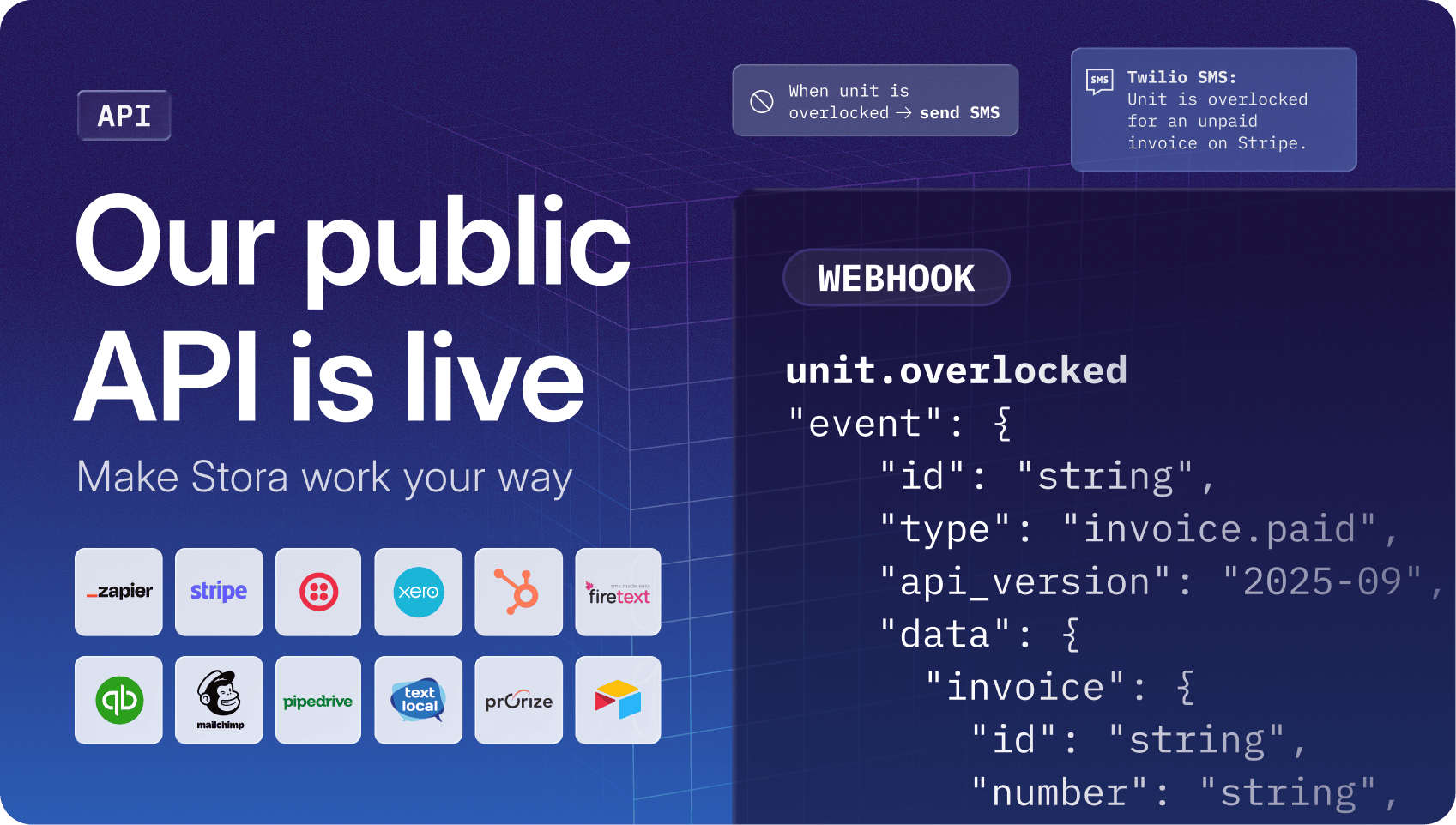Gavin shares the biggest influencers on ROI and reveals his sites’ earnings to help you answer 'How much does a self storage business make?'
Ok, let’s get straight to it. You want to know how much you could potentially earn by opening a self storage business. Here’s what I can tell you from my own experience as a self storage owner and operator.
I’m achieving about a 35%–40% ROI on my first facility in Northern Ireland. My second facility is now at breakeven, and I hope to reach 25%–30% ROI in the next 12–18 months. In other words:
$250k in → yields $86-100k out every year
$300k in → yields $78-93k out every year
However, these numbers don’t mean as much without taking note of two important points:
Lots of factors will affect how much your business can make (which I’ll cover in a moment).
What constitutes a good return can only be determined alongside realistic alternative ways to invest your cash.
When asking How much does a self storage business make?, really what we want to know is how much it can make relative to how much was invested. This comes down to to this familiar equation:
Return on Investment = Profit earned on the investment ➗ Cost of the investment
⚠️ Warning: Baseball analogy coming up
Investing in self storage is a bit like a batter who works pitch counts and takes strikes and balls in baseball. Rather than chasing every pitch, patient batters who know how to draw a walk have higher on-base percentages compared to their peers with higher batting averages. The best batters in MLB have only a 30%-34% chance of hitting the ball AND taking a base without being caught out, whereas taking a base with a walk is a 100% certainty. It may not be as exciting to watch, but if you’ve bet money on the game, the team (or batting lineup) with the higher on-base percentage historically will also have the higher run production in the game.
Like this approach to consistent scoring, self storage is a relatively low-risk asset class to invest in. It can, in some circumstances, take a while for the asset to begin paying back, and it is unlikely to return a quick buck, but it usually comes out a winner.
But as I mentioned, there are a number of factors that can influence the size of that win. Here are the major ones to be aware of as you’re getting started:
1. Your operating or staffing model
How you design the operating model for your self storage business will have a huge and long term impact on how much it can make. Staffing, technology, billing, and payment processing decisions will all factor into how efficient—or inefficient—your business will be and, consequently, how much it will make. Some things to think about here include:
Can customers rent online or must they talk to staff?
Many established self storage operators still don’t let their customers book and pay online. Instead, they require customers to call the office and complete their rental via a member of staff. Requiring customers to phone you has two big drawbacks:
Firstly, many customers simply don’t want to speak to anyone, so rather than call they’ll just find a competitor and book online with them instead.
Secondly, this uses up a ton of staff time, which ends up costing you more money.
With new self storage software built specifically for this industry, like Stora, it’s easy to support online sales and payments from the start.
Will you have staff on site?
New operators should work out whether the additional annual revenue generated by having a member of staff on site will be greater than the cost of having that member of staff on site (eg, salary + heating + space used up). For large sites that turn over $1m, it’s likely that a member of staff on site will provide a positive ROI. For a small site with $100k or less of annual revenue, the cost of a member of staff will almost certainly not pay off. However, today’s on-site automation technology makes running an unmanned site a viable option.
Check out our article Introducing Unmanned Self Storage: Tech + Automation Tips for advice on the tech essentials operators need to create and run an unmanned business model.
How will you create invoices and charge customers?
Will customers pay by push methods (like bank transfer), or will you only allow pull methods (like recurring card payments and direct debit)? Some operators create manual invoices either using an accounting package or even Microsoft Word, then send them to customers and wait for them to pay by bank transfer, cash, or card over the phone.
When starting out, this manual approach sounds simple. “It’s one invoice, no biggy.” But in reality it’s 25, 50, 100, 200 each month or week (depending on your facility size and billing cycles). This quickly becomes an enormous and time consuming recurring admin task that is absolutely unnecessary with modern billing and payments technology. Automating the creation of invoices, allowing only pull methods (meaning your system pulls the money from the customer, rather than waiting for them to push it to you), and putting all tenants on recurring payment plans will remove a huge chunk of work and cost from the operation of your business.
2. Population type and size in the local area
The number of people in the surrounding area of your self storage facility is critically important if you’re wondering how much do self storage businesses make, as it contributes to demand volume, which in turn impacts ROI. For example, imagine that in your country there is approximately 0.5 sq.ft. of self storage supply per capita. If we assume that this is also the level of demand, then if the local population is 100,000 people, that would suggest that 50,000 sq.ft. of self storage space can be filled. However, if the population is just 10,000, that number drops to just 5,000 sq. ft.
Don’t build self storage space the local population can’t support.
The population type is also important. Is it a relatively transient population with people moving in and out of the area regularly (bonus if so as house moves are a driver of self storage demand)? Is there lots of house building going on? What is the economic status of the population? Do they earn above average salaries or is it a deprived area? The general wealth of the population may impact the pricing you can charge.
Get more advice on how to find out population size, your country’s self storage supply per capita, and more in our guide How To Start A Self Storage Business.
3. Competition
Connected to the population size is existing competition in the area. If the population suggests that 50,000 sq.ft. of storage space can be filled, but there’s a large competitor already providing 40,000 sq.ft., then there’s only room for 10,000 sq.ft of additional space.
Check out your competition. Check out their prices. Are they full? These all will impact how much your self storage business makes long term.
4. Owning or leasing the property/land
If you lease the space (which is what I did for my first two facilities), you’re likely to require less upfront capital and the return on investment may be higher sooner. However, the long term ROI may be lower, as you’ll always have to pay rent. If you ever plan to sell the business, owning your property can potentially be much more lucrative.
Personally, I think if you have the capital to get into self storage but the purchase of a site or building is prohibitive, lease a building. Get started one way or another, because the sooner you get into it, the sooner you’ll learn how to do it. And you can always buy a site further down the line.
Back to ROI
A good ROI can range anywhere from 5% (if you’re totally hands off and have a management company running the entire thing for you, this might be acceptable) to 30%+. When I look at opening a new facility, I typically look for 25% or above as an upfront ROI in the financial model.
How much do you need to get started?
I began with about $130k, then needed another $130k to complete the fit out in Year two. I think even with $60k, there is a way to build something that can work (an outdoor container business for example, starting with 5 containers and only buying more once they are full).
You don’t need millions to get started. Anything from $60k upwards is enough to get into self storage and generate a strong, recurring return.
Hopefully this gives you a fuller picture of how much do self storage businesses make, as well as specific insights on ways you can cut costs and project demand to get the most return for your money.








